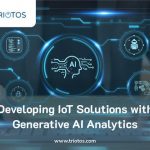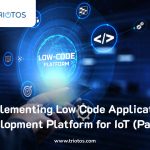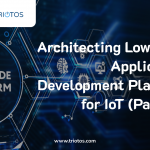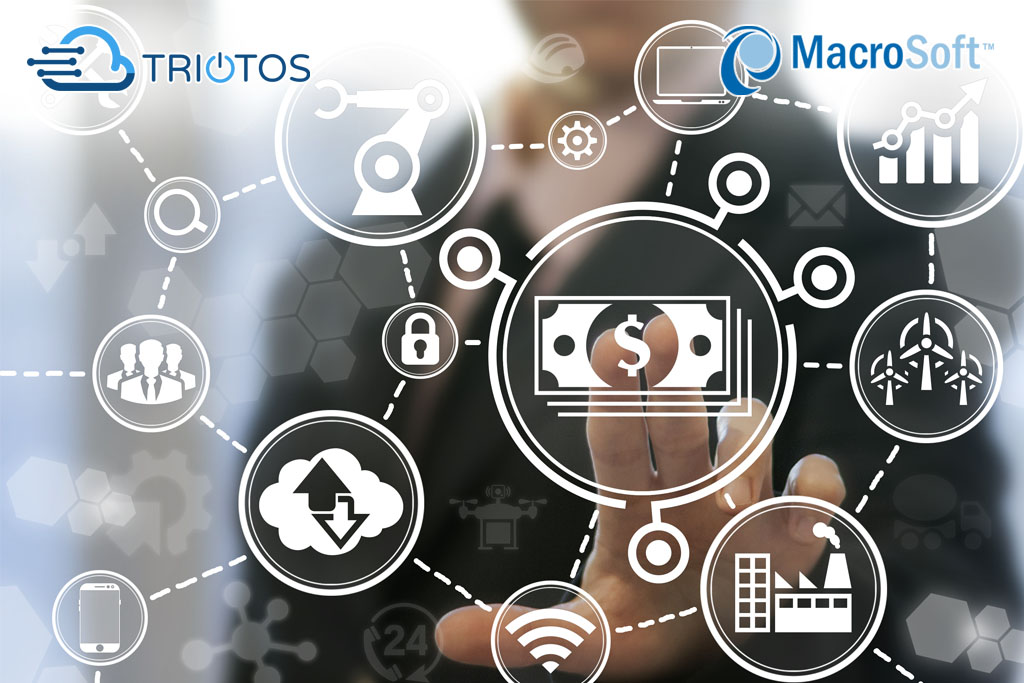
As an industrial equipment, products or solution provider and manufacturer contemplating or planning IoT, you face many unknowns. Foremost among these are what will IoT provide, how much will it cost and how long does it take. In addressing the first, the web is full of blogs, marketing, information (and propaganda) about all the wonderful things IoT will do for your products so yet another blog is certainly not needed. It suffices to say that properly implemented, ‘IoT-ing’ your business has a lot of business upside. Properly done it most likely does not have that much downside. Understanding the second and third (how much it will cost and how long it will take) is more difficult as there is a myriad of views and frankly opinions coming from suppliers, vendors, opinion makers, engineers, IT, and others in many cases selling their specific solution. Nothing wrong with that but figuring out what the answers are can be both confusing and difficult. One way is to divide the problem into relevant parts and look at their components and parameters. For IoT solutions and implementations they can be either very many (10+ moving parts) or few. One example of the latter is describing them as made up of only two parts, The Front End (IoT Thing) and the Back End (The Rest). A picture says more than a thousand IoT words:
‘IoT Things’ ‘The Rest’
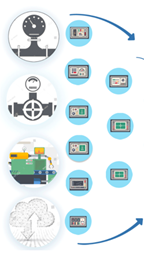
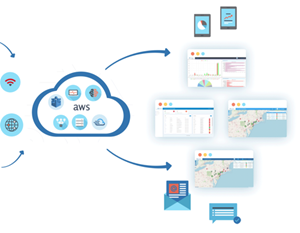
In this view there is a simple division:
- The IoT product, device, system, or equipment – the ‘IoT Thing’.
- ‘The Rest’ – internet connectivity, data handling and processing, and applications.
The reason for this division is that it separates IoT solutions into a part that you as a supplier of equipment products and solutions are experts at, your Thing. This is the business you are in, and your engineers, marketeers, sales, manufacturing, and managers know all about it. This is separate from the part you may not know well, the Rest.
Let us start with turning your Thing into an IoT Thing. As an implementer of IoT solutions this is where you start and the Thing is part of your company’s offering whether it is a device, control panel, physical equipment (machines, controllers, elevators) or an asset, system, or solution you want to connect to the internet as part of an IoT solution.
‘IoT Thing’ Development Complexity: This is obviously totally dependent on your product and system. It always involves the ability to connect to the Internet and the IoT ‘the rest’. If connectivity is not there you need to add this in the form of plug in, gateway or an integrated connectivity solution. Depending on what you have this may involve using existing connectivity and open it up for web access, adding a plug-in device or add-on board (RaspberryPi?) with connectivity or developing/integrating new connectivity hardware. Apart from the physical internet connectivity development your IoT effort needs to include a data model, the way IoT data is represented and sent/received from the cloud. This will involve product development or if your product supports an industrial interface, documentation, and gateway integration effort.
‘IoT Thing’ Development Cost: Every Thing is different, but your existing development organization will be able to assess the cost based on clear understanding of what needs to be done. The first ‘requirement’ is often an IoT data model. This does not have to be complex and can be represented in a spreadsheet with lines representing data items (rpm, pressure, temperature, location, movement etc.) and columns representing ranges, parameters, conditions, frequency, delivery method etc. Yes, the etcetera’s may pose a challenge, but working with a good IoT solutions architect will quickly translate data model into requirements that your engineering team can estimate and implement. The result is pretty straightforward, your IoT Thing must be able to deliver and receive IoT data to and from the internet (IP address and port) through a reliable connectivity method.
Now let us move to ‘The Rest’ which in order to simplify the discussion may be characterized as the ‘Back End’. In IoT, the ‘Back End is made up of three parts:
- Connecting the Thing to the Internet and manage this connectivity (is it working, cost etc.)
- IoT data handling and processing ‘platform’
- IoT applications including web, mobile and integration with relevant existing business systems.
‘The Rest’ Development Complexity: This part is totally dependent whether you have this knowledge in your existing business or not, but also how you go about developing a solution. Connectivity may or may not be easy depending on whether your products are already connected or not. If not, this can be a steep learning curve involving things like approach, method and how connectivity will be managed which it has to be. IoT data handling and processing is complex which is the reason that the market is full of companies offering platforms or ways of creating a platform. The question is whether they provide complete solutions or just piece parts that need to be integrated, something involving considerable complexity. IoT applications may seem to involve less complexity as they involve integration with existing business apps or developing new web and mobile ones. In most cases the complexity is the same as developing a new integration or applications.
‘The Rest’ Development Cost: Like with complexity, the cost is directly related to whether you have this knowledge in your existing business or not. ‘We can do it’ is often heard from development or even IT organizations but chances are that without considerable prior experience it will be costly. The reason is all the ‘moving parts’ that are many ranging from data models, web listeners, IoT data processing and handling, DB storage and applications ranging from monitoring, analytics to specialized mobile and web applications. The learning curve for an IoT cloud platform can be very steep and using a general systems integrator or IoT platform means paying for high development or customization costs involving thousands of lines of code.
‘IoT Thing’ Development Complexity and Cost is something that only your company can properly assess. Are your product engineering resources capable of doing it or do you need assistance? How long will it take? What tools and services are available to accelerate development and reduce costs? Working with vendors and suppliers can provide part of the answers but in the end the answer has to come from within your business.
‘The Rest’ Development Complexity and Cost is totally dependent on how you decide to do it. On your own (DYI), SIs (System Integrators), or IoT Platform Providers. The first can be expensive often running into $Million or more. The latter is totally dependent on who you choose.
At Triotos we provide an IoT platform developed on top of the market leading AWS IoT core platform including integration, applications, and support of various connectivity models. We support customer IoT Thing development by providing advice and support in the form of data models and some IoT oriented development tools. The comparison below is between DYI/SI and the Triotos approach and represents typical costs and time to initial deployment.
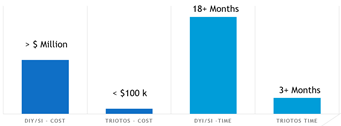
To find out more about Triotos including a live demonstration of our solution, please go to www.triotos.com and contact us for a demo.


